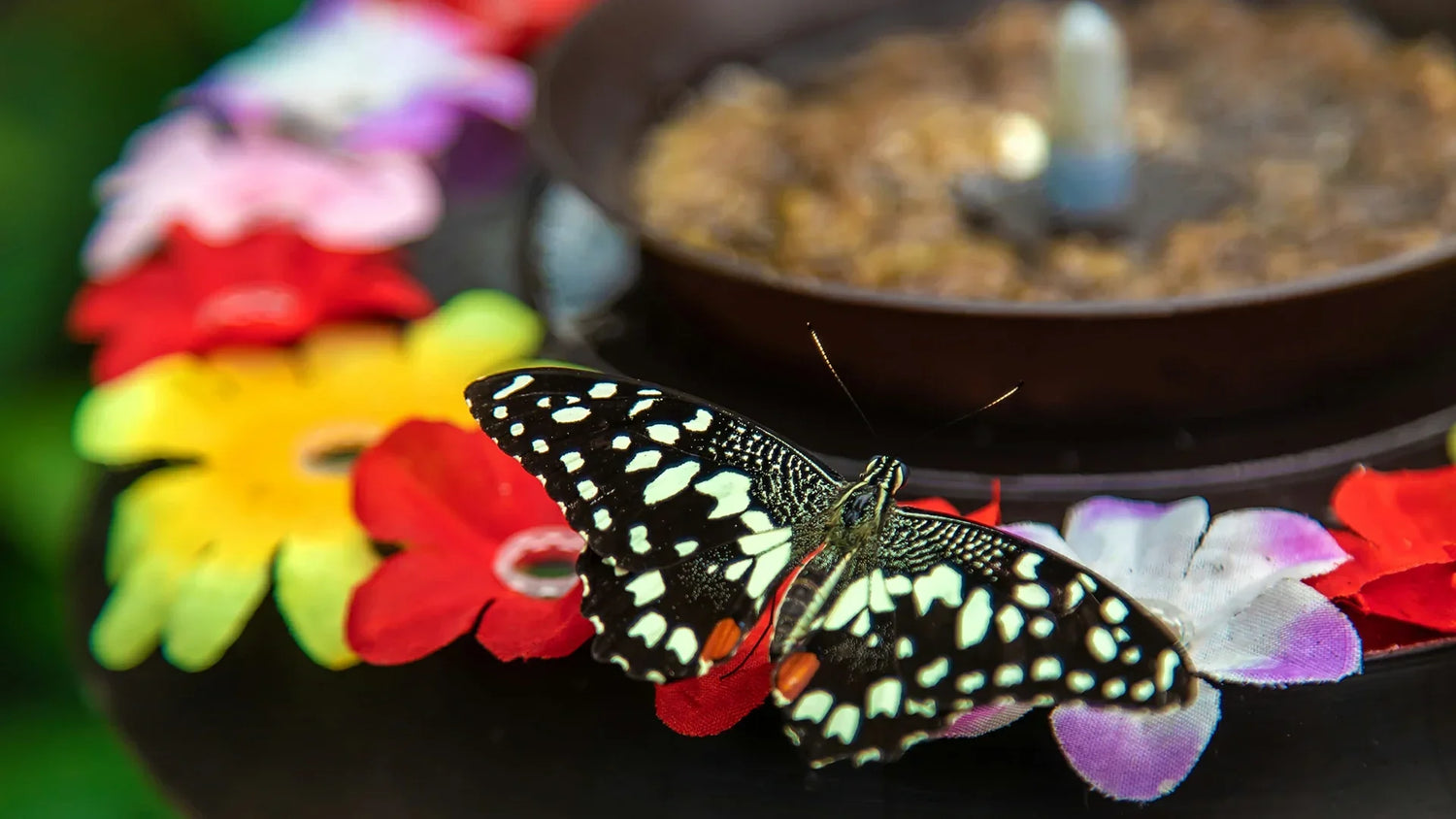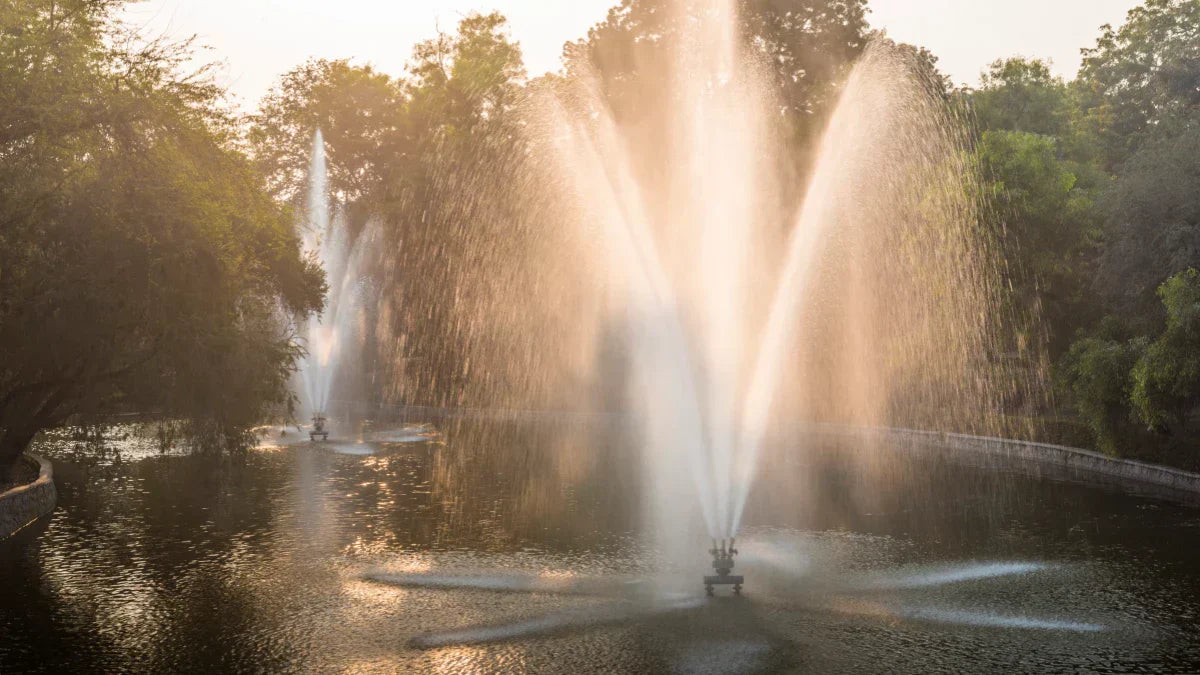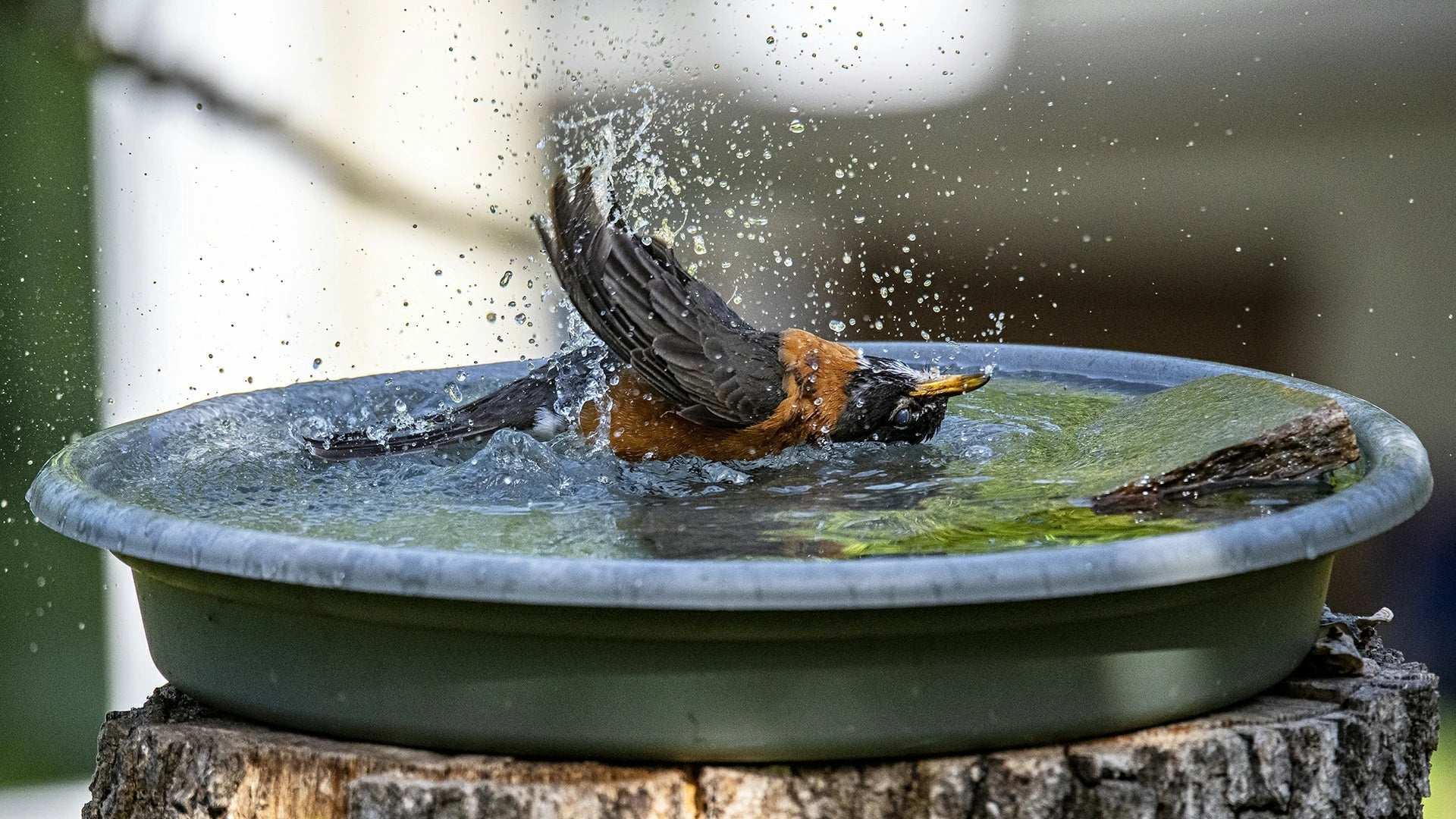There is something magical to observe a goldfinch splashing into a small pond or a monarch butterfly pause briefly to take a sip of water on a hot summer afternoon. These are the gem of thoughtful garden design for most garden nature lovers. Creating a birdpond or a butterfly pond is not simply a visual undertaking—it's about creating a micro-habitat that provides shelter, water, and shelter for fragile pollinators and small animals.
As a garden pond or decorative fountain, a pollinator water feature is all about scale, safety, and accessibility. The goal is to encourage life into a garden, not to enhance space. Through the right ratio of shallow edges, native plants, and environmentally friendly solar-powered Poposoap components, even the tiniest garden or balcony can become a humming haven for bees, butterflies, and birds.
Let us talk about how to design a pond that welcomes these small guests in, nurtures them, and welcomes neighborhood diversity all year round.
Why Do Birds and Butterflies Prefer Water Features?
For butterflies and birds, water is not simply a thirst quencher—it's survival. But all water attractions are not equal. Gushing or deep fountains send smaller birds scurrying, and stagnant pools can harbor bacteria or predators. The magic is moderation: slow water, clear water, and shallow areas for easy access.
For Birds:

Birds bathe, drink, and preen using water. Bathing removes dust and parasites from their feathers, and drinking hydrates them during dry times. A bird friendly pond provides a shallow, undisturbed zone where they may land securely and play in the water. The soft bubbling of a Poposoap solar fountain mimics natural brooks, inviting birds by movement and sound and aerating and cleaning the water.
For Butterflies:

Butterflies will not drink standing water such as birds; instead, they "puddle." They imbibe water from wet surfaces to gain minerals and salts needed for reproduction and flight. A butterfly pond can be made up of shallow wet places, wet rocks, or sandy areas where the butterflies can drink and rest safely without dripping their wings.
For Pollinators in General:

Bees, dragonflies, and small insects also require gentle, chemical-free water sources. An easy-maintenance pollinator water feature with continuous solar circulation keeps water fresh by circulating it, rather than chemical treatments that will keep wildlife away.
Water features become living environments if planned for these natural behaviors—not just decoration, but life.
Shallow Water Belts Design Principles
The secret to the success of a bird and butterfly pond is its shallow water belt—the transition area from land to water where access, cover, and safety are within grasp.
Gradual Slope and Depth Control
Instead of steep slopes, construct your pond with sloping sides. Shallow rims (around 1–3 inches deep) allow birds to walk and butterflies to land safely. Poposoap mini solar pond kits are perfect just such an application—small, easy to install, and perfect for creating graduated water levels.
Surface Texture and Grip
Smooth ceramic or plastic surfaces can be slippery. Add flat stones, gravel, or sand to provide natural texture where small animals can lie or sit. Sun-driven circulation combined with add-ins of organsics make the space both functional and beautiful.
Moving Water for Freshness
Standing water immediately becomes a mosquito breeding ground. With the added presence of a Poposoap floating fountain or solar aerator, there is moving water continually, repelling pests in yet another manner while providing safe and gentle flow perfect for delicate wings.
Sunlight and Sheltered Corners
Small bird and butterfly species like to be closest to cover. Border some of your pond with low shrubs or taller grasses, and have sunny open spots for basking. Place your pond in a position where morning sun and late-day shade strike it—warming enough to get things going but not hot enough to lead to overheating.
Scale and Accessibility
Even an 18–24 inch diameter basin is an effective pollinator water feature. The accessibility is the thing—place it on the ground or install in a raised bed so that it is easy to get to. Avoid installing deep basins where small animals would be trapped.
By being well-planned, your pond is an ecological corridor between land, air, and water—a grand welcome for nature to visit each day.
Correct Choice of Plants
Plants are an immensely vital component of any butterfly pond or bird pond, providing nectar, microclimates, and refuge to support all life. The combined nature of marginal and aquatic plants will make your pond stagnant-turned-self-sustaining.

Marginal Plants (for Edges and Shallows)
These thrive in the moist ground surrounding the pond, stabilizing banks and creating landing points. These are perfect:
- Pickerelweed (Pontederia cordata) – Is visited by bees and butterflies with purple flowers.
- Creeping Jenny (Lysimachia nummularia) – Forms thick mats on shores and has safe landing areas.
- Blue Iris (Iris versicolor) – Features vertical appeal and color contrast for birding perches.
Floating Plants (for Surface Cooling and Shade)
- Water Hyacinth or Frogbit – Create floating mats that provide small birds with resting spots and butterflies shelter from the sun.
- Water Lilies – Create large areas for insects to rest and lower evaporation and algae.
Nectar-Available Border Plants (for Pollinators)
- Milkweed – Monarchs.
- Coneflowers (Echinacea) and Black-eyed Susans – Colorful landing platforms and nectar.
- Lavender and Salvia – Smells that bees and butterflies are drawn to.
Oxygenating Plants (for Water Health)
Submerged aquatics like Hornwort and Anacharis keep the oxygen levels up and prevent algae growth naturally. These are an ideal match for Poposoap solar pond filters that force water through and cleanse it with solar energy.
Plants aren't simply for show—they are a whole ecosystem with dragonfly larvae in the water and songbirds perched in the branches overhead.
Safety Design and Protection

Designing a bird-friendly pond means prioritizing safety—for wildlife, water quality, and even humans. Here's how to turn your pond into a haven, not a hazard.
Depth and Escape Holes
Small creatures can easily slip into deep water. Shallow your pond, or install ramps of rocks or driftwood that serve as a means of escape. Avoid vertical walls.
Non-Toxic Substances
Never use paints, sealants, or chemical dyes that will leach chemicals. Poposoap's solar fountains and filter units are made of heavy-duty, non-toxic ABS material specifically for safe outdoor water use.
Soft Water Pressure
Never use hard jets or high splashes that can frighten away small birds or even shatter butterfly wings. Poposoap's solar pumps allow you to adjust nozzle settings so you can personalize the water level and strength to suit wildlife activity.
Protection from Predators
If your pond is in an open field, birds may be vulnerable to cats or hawks. Add rock edges or potted plants for hiding. For balcony ponds in the city, select a protective dome mesh that continues to allow sunlight and air.
Clean, Filtered Water
Dirty water breeds disease. Poposoap's solar pond filters employ biological and mechanical filtration, which maintains water clarity while creating friendly bacteria. Regular care ensures safety for all visiting wildlife.
By incorporating these safeguards, you protect the very same species that you want to attract—creating a sustainable, healthy ecosystem in partnership with nature.
Successful Case Demonstration
To see these practices in action, let's examine some real-life instances of how Poposoap systems helped homeowners create environmentally friendly pollinator water features.
Case 1: The Small Garden Sanctuary
In a home patio, a homeowner installed a Poposoap solar fountain in a terra cotta saucer about an inch deep beneath native flowers. Sparrows bathed daily and butterflies puddled at the water's edge within one week. The solar fountain provided year-round water circulation without electricity, cooled the pond, and wiped out mosquitoes.
Case 2: The Balcony Butterfly Oasis
A resident of the city used a Poposoap mini pond kit to develop a butterfly habitat on her balcony. Stones, milkweed, and lavender added, she converted a tiny water bowl into an urban pollinator hotspot. Bubbling from the solar pump muffled city sounds while drinking clean water without electricity.
Case 3: The Community Garden Project
A neighborhood garden placed a Poposoap floating fountain/solar filter system into their inner wildlife pond. The constant aeration kept the water crystal clear, and the soothing movement created a haven for migrating dragonflies, bees, and birds. Children now come by to witness the biodiversity the pond creates—all powered from the sun.
All these success stories illustrate how Poposoap products blend sustainability, utility, and aesthetics to create successful wildlife habitats—no chemicals, no cords, just clean energy and intelligent design.
Final Thoughts
Creating a butterfly pond or bird-friendly pond is not simply a matter of aesthetics—it's a way of going back to nature. With the marriage of soothing water movement, native plants, and sun energy, your pond is now a center of activity for pollinators, birds, and all the micro-ecosystem of the area.
Poposoap's solar fountain, filters, and aerators simplify this task and for the environment. All of its products are formulated to harmonize with wildlife needs, imbuing every single drop of water with purpose and beauty.
So no matter how big your yard or how tiny your balcony, remember this: a pollinator water feature does not need to be enormous to make an impact. With a little sunlight, some water, and the hum of solar power, you have a haven where wings, color, and waves all converge in perfect harmony.





Leave a comment
All comments are moderated before being published.
This site is protected by hCaptcha and the hCaptcha Privacy Policy and Terms of Service apply.